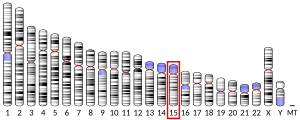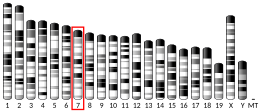POLG
| POLG | |||||||||||||||||||||||||||||||||||||||||||||||||||
|---|---|---|---|---|---|---|---|---|---|---|---|---|---|---|---|---|---|---|---|---|---|---|---|---|---|---|---|---|---|---|---|---|---|---|---|---|---|---|---|---|---|---|---|---|---|---|---|---|---|---|---|
| |||||||||||||||||||||||||||||||||||||||||||||||||||
| Identifiers | |||||||||||||||||||||||||||||||||||||||||||||||||||
| Aliases | POLG, MDP1, MIRAS, MTDPS4A, MTDPS4B, PEO, POLG1, POLGA, SANDO, SCAE, polymerase (DNA) gamma, catalytic subunit, DNA polymerase gamma, catalytic subunit, ORF-Y, POLGARF | ||||||||||||||||||||||||||||||||||||||||||||||||||
| External IDs | OMIM: 174763; MGI: 1196389; HomoloGene: 2016; GeneCards: POLG; OMA:POLG - orthologs | ||||||||||||||||||||||||||||||||||||||||||||||||||
| |||||||||||||||||||||||||||||||||||||||||||||||||||
| |||||||||||||||||||||||||||||||||||||||||||||||||||
| |||||||||||||||||||||||||||||||||||||||||||||||||||
| |||||||||||||||||||||||||||||||||||||||||||||||||||
| Wikidata | |||||||||||||||||||||||||||||||||||||||||||||||||||
| |||||||||||||||||||||||||||||||||||||||||||||||||||
DNA polymerase subunit gamma (POLG or POLG1) is an enzyme that in humans is encoded by the POLG gene.[5] Mitochondrial DNA polymerase is heterotrimeric, consisting of a homodimer of accessory subunits plus a catalytic subunit. The protein encoded by this gene is the catalytic subunit of mitochondrial DNA polymerase. Defects in this gene are a cause of progressive external ophthalmoplegia with mitochondrial DNA deletions 1 (PEOA1), sensory ataxic neuropathy dysarthria and ophthalmoparesis (SANDO), Alpers-Huttenlocher syndrome (AHS), and mitochondrial neurogastrointestinal encephalopathy syndrome (MNGIE).[6]
Structure
[edit]POLG is located on the q arm of chromosome 15 in position 26.1 and has 23 exons. The POLG gene produces a 140 kDa protein composed of 1239 amino acids.[7][8] POLG, the protein encoded by this gene, is a member of the DNA polymerase type-A family. It is a mitochondrion nucleiod with an Mg2+ cofactor and 15 turns, 52 beta strands, and 39 alpha helixes.[9][10] POLG contains a polyglutamine tract near its N-terminus that may be polymorphic. Two transcript variants encoding the same protein have been found for this gene.[6]
Function
[edit]POLG is a gene that codes for the catalytic subunit of the mitochondrial DNA polymerase, called DNA polymerase gamma.[6] The human POLG cDNA and gene were cloned and mapped to chromosome band 15q25.[11] In eukaryotic cells, the mitochondrial DNA is replicated by DNA polymerase gamma, a trimeric protein complex composed of a catalytic subunit, POLG, and a dimeric accessory subunit of 55 kDa encoded by the POLG2 gene.[12] The catalytic subunit contains three enzymatic activities, a DNA polymerase activity, a 3’-5’ exonuclease activity that proofreads misincorporated nucleotides, and a 5’-dRP lyase activity required for base excision repair.
Catalytic activity
[edit]Deoxynucleoside triphosphate + DNA(n) = diphosphate + DNA(n+1).[9][10]
Clinical significance
[edit]Mutations in the POLG gene are associated with several mitochondrial diseases, progressive external ophthalmoplegia with mitochondrial DNA deletions 1 (PEOA1), sensory ataxic neuropathy dysarthria and ophthalmoparesis (SANDO), Alpers-Huttenlocher syndrome (AHS), and mitochondrial neurogastrointestinal encephalopathy syndrome (MNGIE).[6] Pathogenic variants have also been linked with fatal congenital myopathy and gastrointestinal pseudo-obstruction and fatal infantile hepatic failure.[13][14] A list of all published mutations in the POLG coding region and their associated disease can be found at the Human DNA Polymerase Gamma Mutation Database.
Mice heterozygous for a Polg mutation are only able to replicate their mitochondrial DNA inaccurately, so that they sustain a 500-fold higher mutation burden than normal mice. These mice show no clear features of rapidly accelerated aging, indicating that mitochondrial mutations do not have a causal role in natural aging.[15]
Interactions
[edit]POLG has been shown to have 50 binary protein-protein interactions including 32 co-complex interactions. POLG appears to interact with POLG2, Dlg4, Tp53, and Sod2.[16]
References
[edit]- ^ a b c GRCh38: Ensembl release 89: ENSG00000140521 – Ensembl, May 2017
- ^ a b c GRCm38: Ensembl release 89: ENSMUSG00000039176 – Ensembl, May 2017
- ^ "Human PubMed Reference:". National Center for Biotechnology Information, U.S. National Library of Medicine.
- ^ "Mouse PubMed Reference:". National Center for Biotechnology Information, U.S. National Library of Medicine.
- ^ Zullo SJ, Butler L, Zahorchak RJ, Macville M, Wilkes C, Merril CR (Mar 1998). "Localization by fluorescence in situ hybridization (FISH) of human mitochondrial polymerase gamma (POLG) to human chromosome band 15q24→q26, and of mouse mitochondrial polymerase gamma (Polg) to mouse chromosome band 7E, with confirmation by direct sequence analysis of bacterial artificial chromosomes (BACs)". Cytogenetics and Cell Genetics. 78 (3–4): 281–4. doi:10.1159/000134672. PMID 9465903.
- ^ a b c d Entrez Gene: POLG polymerase (DNA directed), gamma, catalytic subunit
 This article incorporates text from this source, which is in the public domain.
This article incorporates text from this source, which is in the public domain.
- ^ Yao, Daniel. "Cardiac Organellar Protein Atlas Knowledgebase (COPaKB) —— Protein Information". amino.heartproteome.org. Archived from the original on 2018-08-29. Retrieved 2018-08-28.
- ^ Zong NC, Li H, Li H, Lam MP, Jimenez RC, Kim CS, Deng N, Kim AK, Choi JH, Zelaya I, Liem D, Meyer D, Odeberg J, Fang C, Lu HJ, Xu T, Weiss J, Duan H, Uhlen M, Yates JR, Apweiler R, Ge J, Hermjakob H, Ping P (October 2013). "Integration of cardiac proteome biology and medicine by a specialized knowledgebase". Circulation Research. 113 (9): 1043–53. doi:10.1161/CIRCRESAHA.113.301151. PMC 4076475. PMID 23965338.
- ^ a b "POLG - DNA polymerase subunit gamma-1 - Homo sapiens (Human) - POLG gene & protein". www.uniprot.org. Retrieved 2018-08-28.
 This article incorporates text available under the CC BY 4.0 license.
This article incorporates text available under the CC BY 4.0 license.
- ^ a b "UniProt: the universal protein knowledgebase". Nucleic Acids Research. 45 (D1): D158–D169. January 2017. doi:10.1093/nar/gkw1099. PMC 5210571. PMID 27899622.
- ^ Ropp PA, Copeland WC (September 1996). "Cloning and characterization of the human mitochondrial DNA polymerase, DNA polymerase gamma". Genomics. 36 (3): 449–58. doi:10.1006/geno.1996.0490. PMID 8884268.
- ^ Graziewicz MA, Longley MJ, Copeland WC (February 2006). "DNA polymerase gamma in mitochondrial DNA replication and repair". Chemical Reviews. 106 (2): 383–405. doi:10.1021/cr040463d. PMID 16464011.
- ^ Giordano C, Powell H, Leopizzi M, De Curtis M, de Curtis M, Travaglini C, Sebastiani M, Gallo P, Taylor RW, d'Amati G (March 2009). "Fatal congenital myopathy and gastrointestinal pseudo-obstruction due to POLG1 mutations". Neurology. 72 (12): 1103–5. doi:10.1212/01.wnl.0000345002.47396.e1. PMC 2821839. PMID 19307547.
- ^ Müller-Höcker J, Horvath R, Schäfer S, Hessel H, Müller-Felber W, Kühr J, Copeland WC, Seibel P (February 2011). "Mitochondrial DNA depletion and fatal infantile hepatic failure due to mutations in the mitochondrial polymerase γ (POLG) gene: a combined morphological/enzyme histochemical and immunocytochemical/biochemical and molecular genetic study". Journal of Cellular and Molecular Medicine. 15 (2): 445–56. doi:10.1111/j.1582-4934.2009.00819.x. PMC 3822808. PMID 19538466.
- ^ Vermulst M, Bielas JH, Kujoth GC, Ladiges WC, Rabinovitch PS, Prolla TA, Loeb LA (April 2007). "Mitochondrial point mutations do not limit the natural lifespan of mice". Nature Genetics. 39 (4): 540–3. doi:10.1038/ng1988. PMID 17334366. S2CID 291780.
- ^ "50 binary interactions found for search term POLG". IntAct Molecular Interaction Database. EMBL-EBI. Retrieved 2018-08-29.
Further reading
[edit]- Graziewicz MA, Longley MJ, Copeland WC (February 2006). "DNA polymerase gamma in mitochondrial DNA replication and repair". Chemical Reviews. 106 (2): 383–405. doi:10.1021/cr040463d. PMID 16464011.
- Hudson G, Chinnery PF (October 2006). "Mitochondrial DNA polymerase-gamma and human disease". Human Molecular Genetics. 15 Spec No 2: R244-52. doi:10.1093/hmg/ddl233. PMID 16987890.
- Lestienne P (August 1987). "Evidence for a direct role of the DNA polymerase gamma in the replication of the human mitochondrial DNA in vitro". Biochemical and Biophysical Research Communications. 146 (3): 1146–53. doi:10.1016/0006-291X(87)90767-4. PMID 3619920.
- Ropp PA, Copeland WC (September 1996). "Cloning and characterization of the human mitochondrial DNA polymerase, DNA polymerase gamma". Genomics. 36 (3): 449–58. doi:10.1006/geno.1996.0490. PMID 8884268.
- Lecrenier N, Van Der Bruggen P, Foury F (January 1997). "Mitochondrial DNA polymerases from yeast to man: a new family of polymerases". Gene. 185 (1): 147–52. doi:10.1016/S0378-1119(96)00663-4. PMID 9034326.
- Walker RL, Anziano P, Meltzer PS (March 1997). "A PAC containing the human mitochondrial DNA polymerase gamma gene (POLG) maps to chromosome 15q25". Genomics. 40 (2): 376–8. doi:10.1006/geno.1996.4580. PMID 9119411.
- Kapsa RM, Quigley AF, Han TF, Jean-Francois MJ, Vaughan P, Byrne E (October 1998). "mtDNA replicative potential remains constant during ageing: polymerase gamma activity does not correlate with age related cytochrome oxidase activity decline in platelets". Nucleic Acids Research. 26 (19): 4365–73. doi:10.1093/nar/26.19.4365. PMC 147866. PMID 9742236.
- Spelbrink JN, Toivonen JM, Hakkaart GA, Kurkela JM, Cooper HM, Lehtinen SK, Lecrenier N, Back JW, Speijer D, Foury F, Jacobs HT (August 2000). "In vivo functional analysis of the human mitochondrial DNA polymerase POLG expressed in cultured human cells". The Journal of Biological Chemistry. 275 (32): 24818–28. doi:10.1074/jbc.M000559200. PMID 10827171.
- Van Goethem G, Dermaut B, Löfgren A, Martin JJ, Van Broeckhoven C (July 2001). "Mutation of POLG is associated with progressive external ophthalmoplegia characterized by mtDNA deletions". Nature Genetics. 28 (3): 211–2. doi:10.1038/90034. PMID 11431686. S2CID 35417835.
- Hirano M, DiMauro S (December 2001). "ANT1, Twinkle, POLG, and TP: new genes open our eyes to ophthalmoplegia". Neurology. 57 (12): 2163–5. doi:10.1212/wnl.57.12.2163. PMID 11756592. S2CID 42784334.
- Ponamarev MV, Longley MJ, Nguyen D, Kunkel TA, Copeland WC (May 2002). "Active site mutation in DNA polymerase gamma associated with progressive external ophthalmoplegia causes error-prone DNA synthesis". The Journal of Biological Chemistry. 277 (18): 15225–8. doi:10.1074/jbc.C200100200. PMID 11897778.
- Nitanai Y, Satow Y, Adachi H, Tsujimoto M (August 2002). "Crystal structure of human renal dipeptidase involved in beta-lactam hydrolysis". Journal of Molecular Biology. 321 (2): 177–84. doi:10.1016/S0022-2836(02)00632-0. PMID 12144777.
- Lamantea E, Tiranti V, Bordoni A, Toscano A, Bono F, Servidei S, Papadimitriou A, Spelbrink H, Silvestri L, Casari G, Comi GP, Zeviani M (August 2002). "Mutations of mitochondrial DNA polymerase gammaA are a frequent cause of autosomal dominant or recessive progressive external ophthalmoplegia". Annals of Neurology. 52 (2): 211–9. doi:10.1002/ana.10278. PMID 12210792. S2CID 8324826.
- Van Goethem G, Martin JJ, Dermaut B, Löfgren A, Wibail A, Ververken D, Tack P, Dehaene I, Van Zandijcke M, Moonen M, Ceuterick C, De Jonghe P, Van Broeckhoven C (February 2003). "Recessive POLG mutations presenting with sensory and ataxic neuropathy in compound heterozygote patients with progressive external ophthalmoplegia". Neuromuscular Disorders. 13 (2): 133–42. doi:10.1016/S0960-8966(02)00216-X. PMID 12565911. S2CID 2159997.
- Jazayeri M, Andreyev A, Will Y, Ward M, Anderson CM, Clevenger W (March 2003). "Inducible expression of a dominant negative DNA polymerase-gamma depletes mitochondrial DNA and produces a rho0 phenotype". The Journal of Biological Chemistry. 278 (11): 9823–30. doi:10.1074/jbc.M211730200. PMID 12645575.
- Garrido N, Griparic L, Jokitalo E, Wartiovaara J, van der Bliek AM, Spelbrink JN (April 2003). "Composition and dynamics of human mitochondrial nucleoids". Molecular Biology of the Cell. 14 (4): 1583–96. doi:10.1091/mbc.E02-07-0399. PMC 153124. PMID 12686611.
- Agostino A, Valletta L, Chinnery PF, Ferrari G, Carrara F, Taylor RW, Schaefer AM, Turnbull DM, Tiranti V, Zeviani M (April 2003). "Mutations of ANT1, Twinkle, and POLG1 in sporadic progressive external ophthalmoplegia (PEO)". Neurology. 60 (8): 1354–6. doi:10.1212/01.wnl.0000056088.09408.3c. PMID 12707443. S2CID 31209510.
- Van Goethem G, Schwartz M, Löfgren A, Dermaut B, Van Broeckhoven C, Vissing J (July 2003). "Novel POLG mutations in progressive external ophthalmoplegia mimicking mitochondrial neurogastrointestinal encephalomyopathy". European Journal of Human Genetics. 11 (7): 547–9. doi:10.1038/sj.ejhg.5201002. PMID 12825077.
- Zullo SJ, Butler L, Zahorchak RJ, Macville M, Wilkes C, Merril CR (Mar 1998). "Localization by fluorescence in situ hybridization (FISH) of human mitochondrial polymerase gamma (POLG) to human chromosome band 15q24→q26, and of mouse mitochondrial polymerase gamma (Polg) to mouse chromosome band 7E, with confirmation by direct sequence analysis of bacterial artificial chromosomes (BACs)". Cytogenetics and Cell Genetics. 78 (3–4): 281–4. doi:10.1159/000134672. PMID 9465903.
External links
[edit]This article incorporates text from the United States National Library of Medicine, which is in the public domain.





